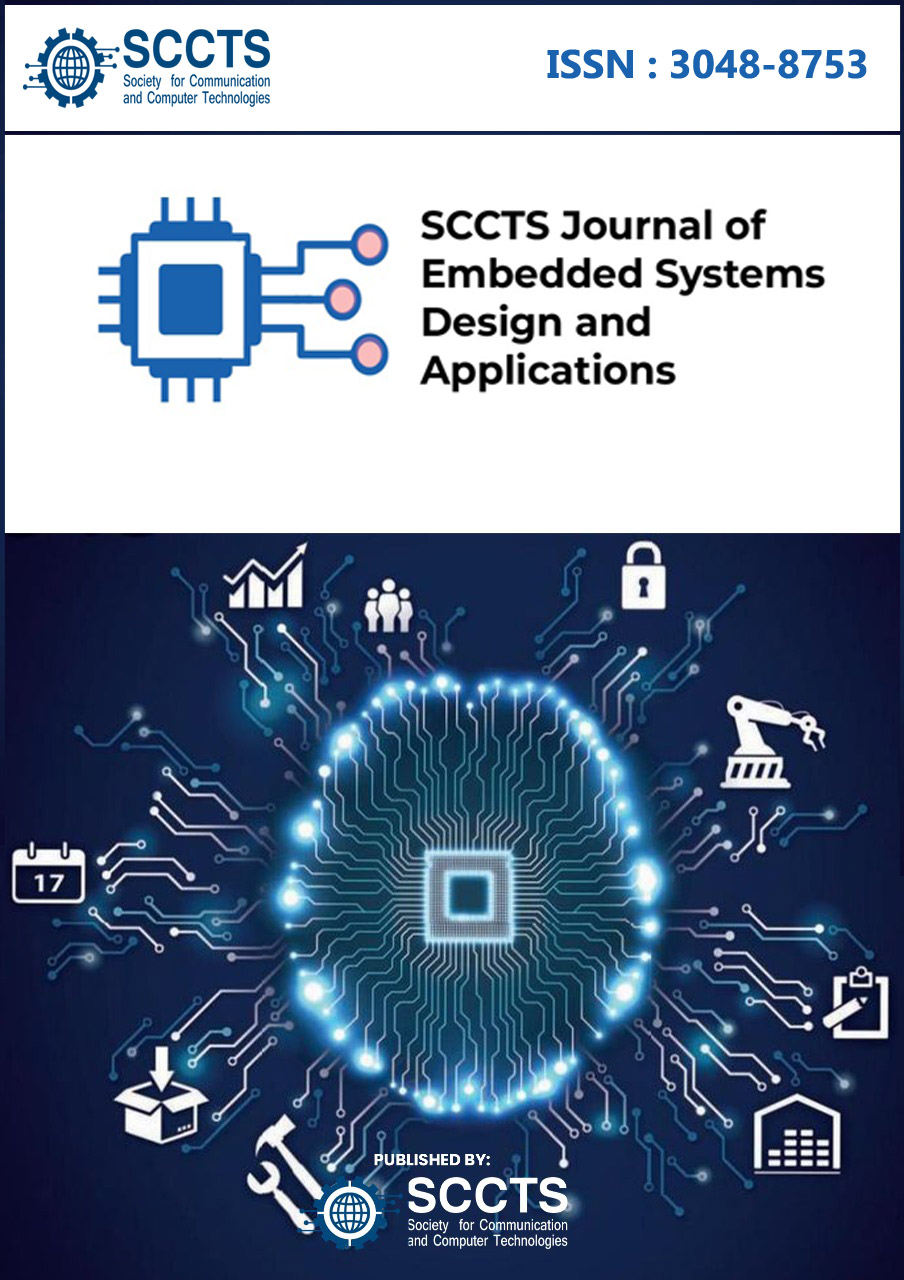Ultra-Low-Power Embedded Processor for Wearable Healthcare Monitoring
DOI:
https://doi.org/10.31838/ESA/03.01.04Keywords:
Ultra-Low-Power Processor; Wearable Devices; Embedded Systems; Healthcare Monitoring; FRAM; Sub-Threshold Logic; Event-Driven Architecture; Biomedical Signal Processing; Edge AI; Battery Life Optimization.Abstract
Given that more and more wearable devices focus on continuous real-time health monitoring, energy-efficient embedded processor design is needed to ensure that systems meet consumers expectations in areas such as reliability and power and performance requirements. This article is an implementation, design, and demonstration of an ultra-low-power embedded processor optimally designed towards biomedical signal acquisition and analysis of wearable healthcare apps. The recommended architecture combines with sub-threshold logic sets, on-die non-volatile ferroelectric RAM (FRAM), dynamic-clock gating, and event-driven wake-up engine, so very high energy efficiency can be achieved without losing real time responsiveness. To authenticate the processor performance, prototype system was created and connected with physiological sensors with low power consumption comprising of ECG electrodes, thermistors, and pulse oximetry modules. The processor carries out very lightweight machine learning inference including arrhythmia detection and temperature anomaly classification on quantized neural networks and decision trees through CMSIS-NN and uBoost libraries respectively. The trials were performed on both the MIT-BIH arrhythmia database and hypothetical and novel-gathered vital data incorporated into actual operational execution situations. The findings show that the suggested system has as much as 65 per cent fewer active power consumption than that of ARM Cortex-M4 or MSP430FR platform, with an average inference time of 7.8 milliseconds and overall classification accuracy of over 95 per cent on all the observed parameters. Also, the battery life was increased to more than 130 hours on a typical 240 mAh Li-ion cell, proving its applicability to long, maintenance-free wearable applications. The architecture is effective with respect to balancing computing performance and energy savings hence demonstrating the possibility of integrating the intelligent health monitoring abilities in systems that require small size and power. This paper has made a step forward in achieving low-power edge intelligence within a digital health application since it presents a highly-flexible processor architecture upon which future components that are currently envisioned to be required in biometric sensing and safe communications can be added allowing next-generation self-sustainable wearable digital health technologies to emerge in the future.





